Our hotel could only take us for one night, so we checked out early in the morning and asked them to hold our bags. After breakfast, we’d head to the tourism office to see if they would help us find a room. But first thing first. We needed a real American breakfast.
We walked over to the Breakfast in America diner. We are happy to report that breakfast was truly everything we hoped it would be. We had eggs and French toast and hash browns and bacon and toast. The portions were large and the eggs and bacon were cooked just right. It seems that everywhere outside of America, eggs and bacon are both served raw, so eggs cooked right is a luxury. Although, our foreign friends tell us the eggs and bacon in America are always overcooked. It is a cultural thing, we suppose. We found it interesting that the French people there seemed to be attracted by the bottomless cup of coffee. In Europe, beverages are generally served in small cups. And you don’t get refills. So the concept of a bottomless cup of coffee is almost mind blowing to the French. And what is funny is that not getting a free refill on your coffee was kind of mind blowing for us before we left on our journey.
We caught the subway to the Gare du Nord train station, a few miles northwest of the restaurant. The tourist office is in a little kiosk in the middle of the large and bustling station/shopping center. It took us a few minutes to find it. The lady behind the counter asked us what part of town we wanted to be in. We told her Marias or Bastille. She said nothing was available there, the closest was in Central Paris about halfway between Marias and Gare du Nord. That is an even better location, which made us happy. We were amazed when she said the room was $50 USD per night less than the average going rate in Paris. Wow. That evened out paying more than we had hoped last night.
Once our room was reserved, started focusing on tourism stuff. We had seen a flier offering tours on a Segway (motorized one person vehicle with two wheels), and Eric really wanted to do that. He called to check availability and we were delighted to find out that they could take us in an hour and a half. Awesome. We get major nerd points for this! The rendezvous spot was the Eiffel Tower. We immediately hopped back on the metro and went to the Eiffel tower. The plan was to go up to the top of the tower really quick before the tour, but the lines were too long. There was no way we’d make it back down in time for our meeting.
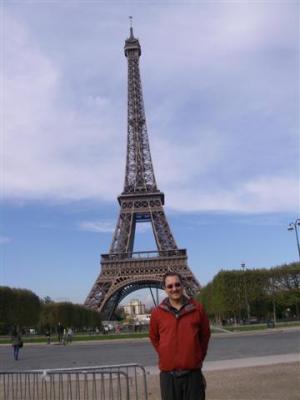
The Eiffel tower is located at the northwest portion of a park called Champ de Mars. At the opposite end of the park is the Military Academy, and the park used to be the parade grounds for the cadets of the academy. The current Academy building was built in 1772, and Napoleon was one of its many graduates. We hung out in the park until our meeting time. All morning it had looked like it was going to rain, but the clouds started to break up and the sun poked through. Thank goodness.
The tour guide was easy to find since he was on a Segway himself. We were pleased to find out we had a private tour since another group cancelled. Awesome. We walked about 6 blocks to the tour company’s office. They spent a few minutes teaching us to use the Segways in front of their office, and then we were off. We have to admit that the Segways are totally fun! As far as we are concerned, it was worth the money to play on the Segways for four hours, and the tour of Paris was just a bonus. The pace was not at all rushed, with plenty of time at each stop and ample riding time.
The first stop on the tour was back at the Academy, where we learned that Napoleon started at the Academy at 15 and finished his two year program in only one year. He entered military service at 16 as an artillery specialist. One of his teachers had noted that under the right circumstances, Napoleon could do great things. At the Academy there is also a symbolic peace sculpture, an interesting icon in front of a war school.
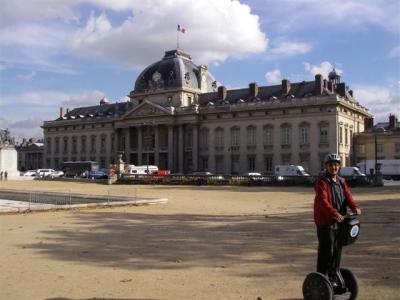
We rode several blocks northeast to our next stop, the Eglise du Dome, which was originally built as a private church for the royal family. The gold topping the dome is real. Apparently, when it was built, the dome interior was painted in the same painstakingly detailed style as the churches we have seen. The dome is really tall and the king had a hard time seeing the artwork, so he ordered a second dome to be built inside the first dome so that the ceiling was closer. The top set of windows, just under the gilding, are blocked by the second interior dome. Napoleon is buried in the building. When the Nazis occupied France, Hitler visited Napoleon’s grave. A freedom fighter group had been using the space between the two domes as their secret meeting site. There was a meeting going on upstairs at the time Hitler was in the building. Neither knew about the other’s presence. Imagine how history would have changed if the freedom fighters knew Hitler were there”¦
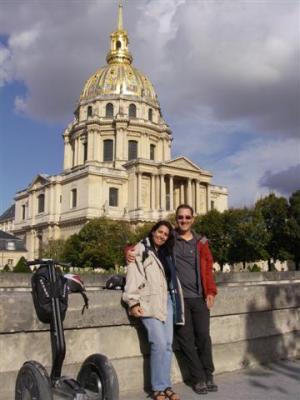
Behind the church is the Hotel de Invalides, which Louis XIV had built to house 4,000 disabled war veterans. As you can see, it is a standard French style building, with an attractive and meticulously landscaped garden full of canons. There is also a dry moat that surrounds it and the church that is not visible in the photos. Why the moat and canons to protect invalids? The king also kept the main stockade of military weapons here. On July 14, 1789, a mob forced its way inside and seized 28,000 rifles. Once they had the guns, the mob headed for the Bastille prison. Today, one wing still houses about 100 disabled veterans and the rest of the building is used as an Army museum.
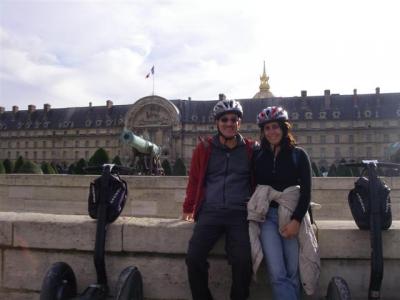
We rode another three or four blocks further north through a park, and we came to the Alexander III bridge. Our tour guide said it is the most photographed bridge in Paris. Understandable, since it is filled with statues and ornate, old fashioned gas lamps, plus there are nice views of the Seine River. It was built in 1900 for the World Exposition, as were the two buildings at the opposite side of the bridge, the Grand Palace and the Petite Palace. This was the first lit bridge, a pretty impressive feat at the time. The Grand Palace now holds traveling exhibits, and the Petite Palace is a now fine art museum.
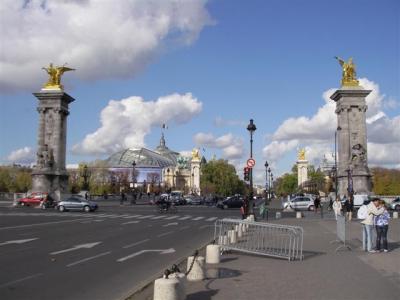
We crossed the bridge, but rather than going past the Palaces, we made a right turn and followed the river southeast. Here is the Seine River, with the Alexander III bridge in the background and the Eiffel Tower even farther in the background.
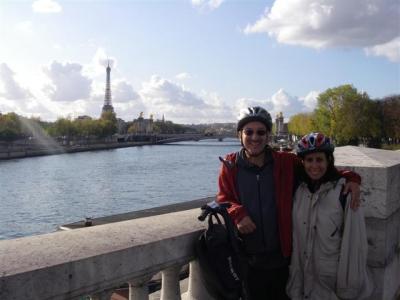
Our next stop was Place de la Concorde, a large town square with a big vehicle intersection running through it. It was laid out in the mid-1700’s. In the center of the traffic intersection (and the square) is a 3300 year old pink granite, Egyptian obelisk taken from the Temple of Ramses in Thebes. It was given to the French by the Pasha Muhammed Ali in 1831 in exchange for a clock from the French that never worked. The Egyptians are still bitter about the unfair exchange. It was weird for us to see the obelisk here, because we could tell you exactly where it belonged in the Karnak complex. When we were in Rome, we were kind of awe struck by the concept that we had been to the original home of the obelisks. It was an even stronger sensation here. In Rome, for some reason seeing the important religious icons used merely as piazza (town square) decoration saddened us. It saddened us here, as well.
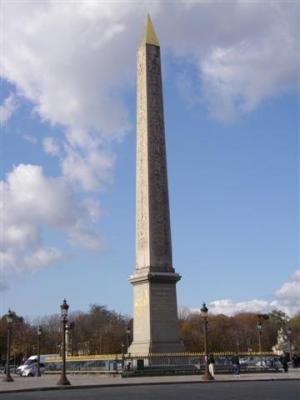
In addition to the obelisk in the middle of the road, there is more art. There is a fountain with statues of naked women bathing in it. There are eight doors that seem to go to nowhere, each topped with a giant sculpture of a woman, which is supposed to represent the eight biggest cities of France. There are quite a few decorative green and gold columns. The buildings surrounding it are stately, built in the Greco-Roman style, not the typical Parisian style.
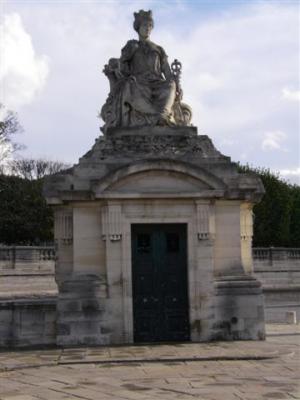
In 1793, the Revolutionaries set up a guillotine in this square and cut off Louis XVI’s head. The guillotine became the preferred execution tool and over the next two years, another 1343 people, including Louis XVI’s wife, Marie-Antoinette, were executed here.
To be continued”¦

I’m completely jealous that you got to go on segway’s around Paris. If I ever go back I’m for sure doing this.